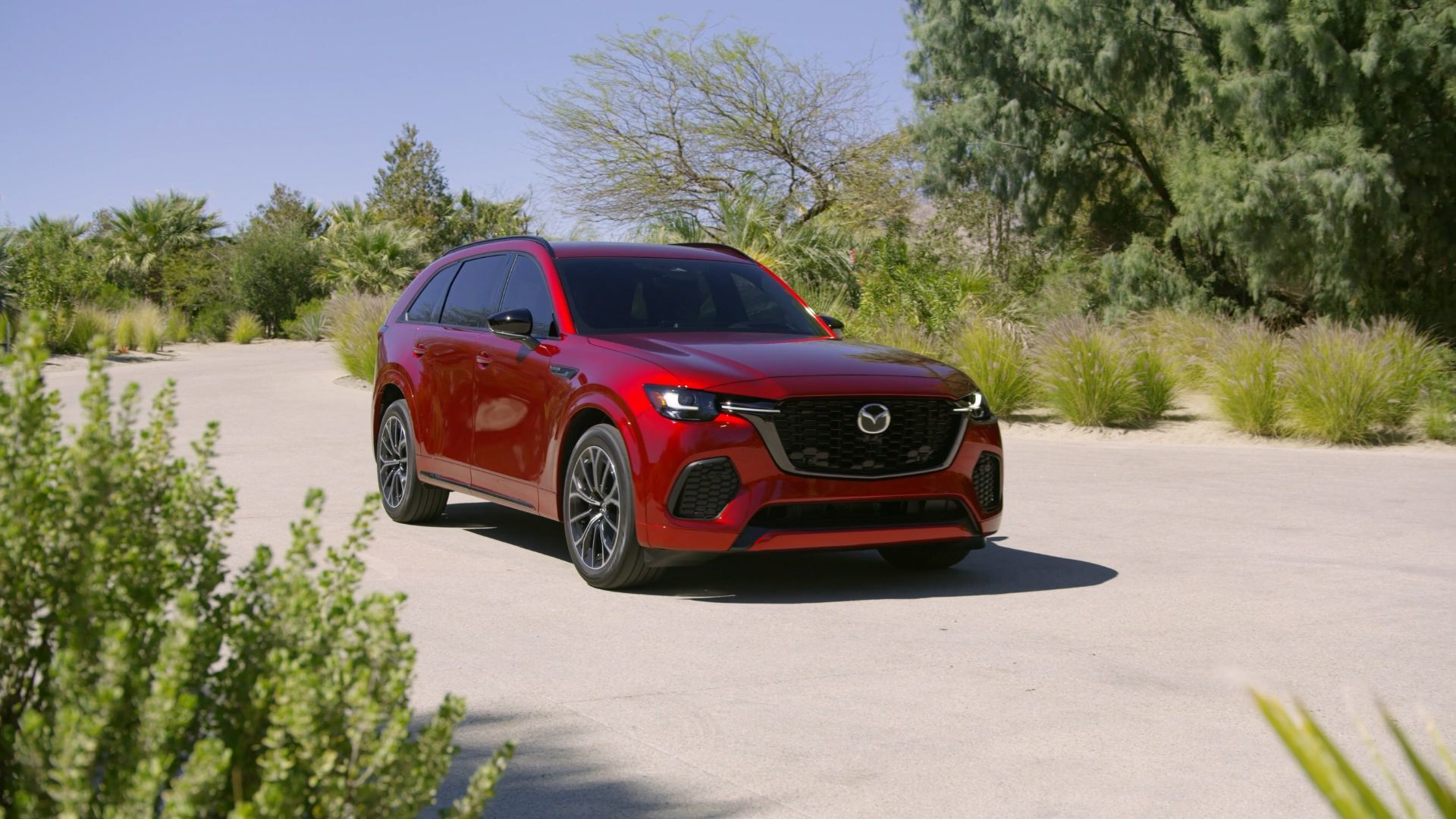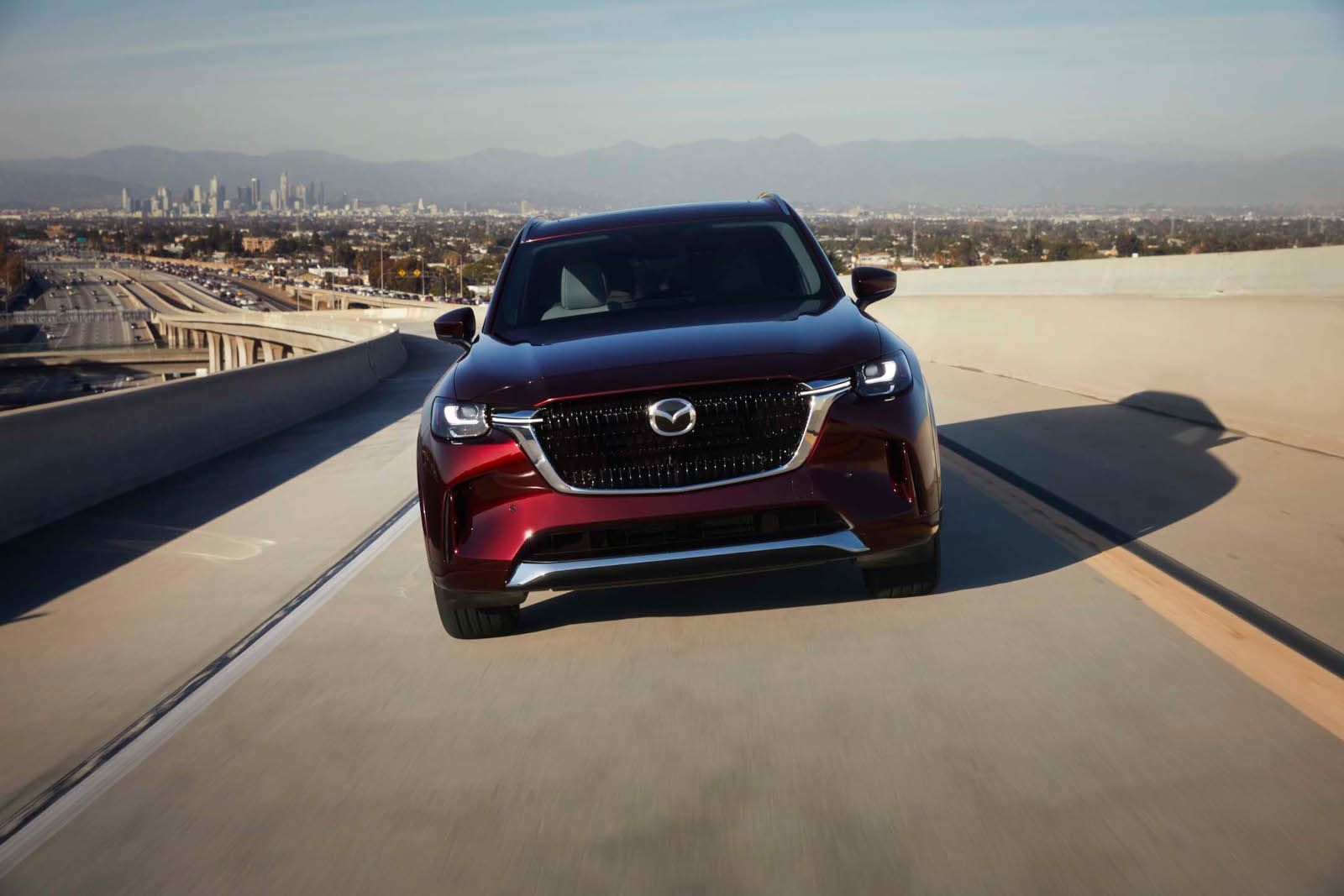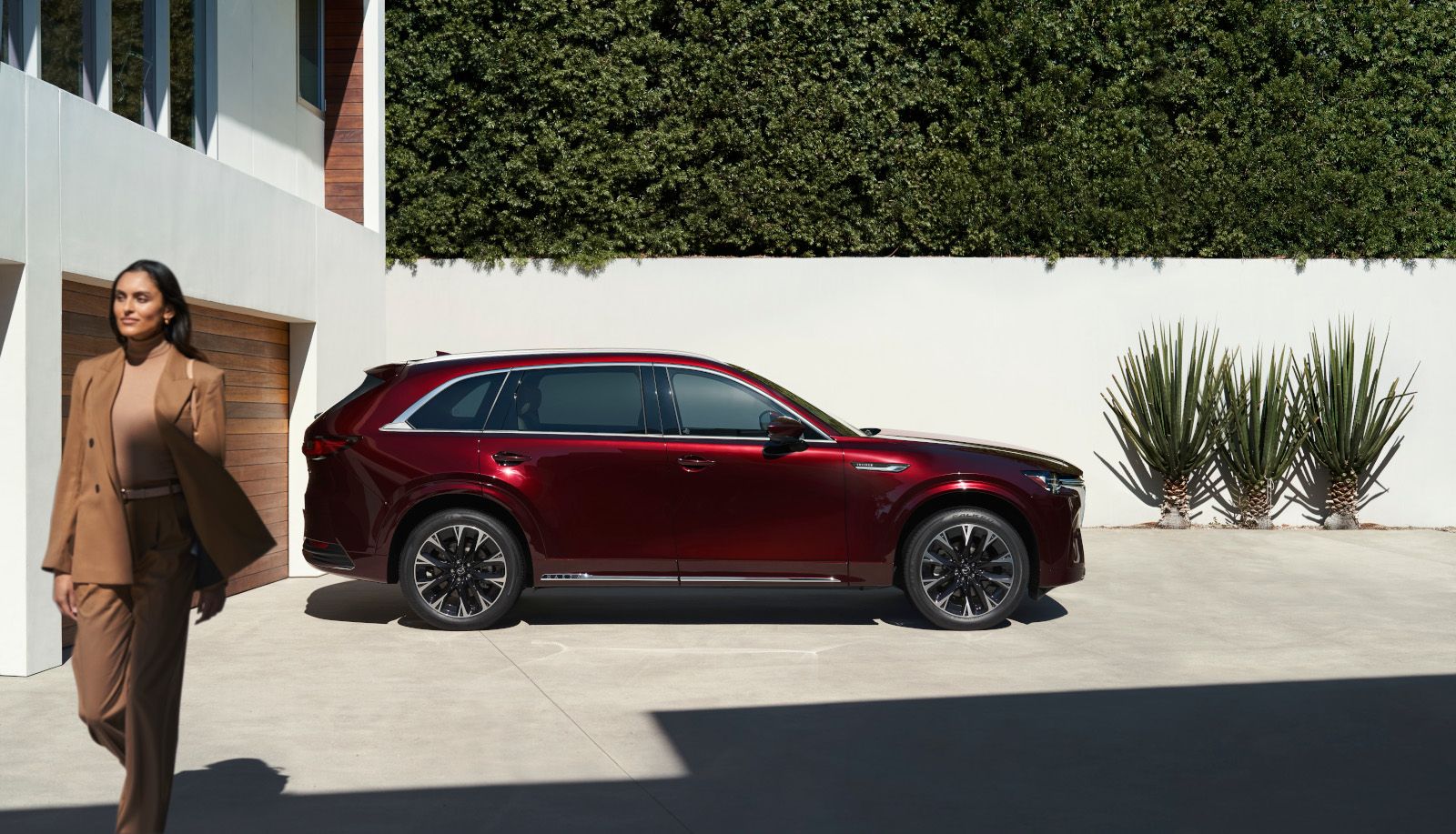Understanding Mazda's 48-Volt Mild-Hybrid System in the CX-70 and CX-90
November 20 2025,

When British Columbia drivers research hybrid technology, they encounter a confusing array of terms: full hybrid, plug-in hybrid, mild hybrid. Each works differently, and each requires different compromises. For Metro Vancouver drivers seeking fuel efficiency without infrastructure dependency, Mazda's 48-volt mild-hybrid system delivers a practical middle ground.
The 2025 Mazda CX-70 and CX-90 both feature M Hybrid Boost technology—a 48-volt mild-hybrid system that assists their 3.3 L turbocharged inline-six engines. This system improves efficiency and low-speed throttle response without requiring charging cables, range management, or lifestyle changes. The technology fits naturally into British Columbia's driving patterns, from city commutes to weekend mountain trips.
How M Hybrid Boost Works
The 48-volt mild-hybrid system in the CX-70 and CX-90 operates through three key components: a compact lithium-ion battery (0.33 kWh capacity), an integrated starter-generator (11 kW rated power), and regenerative braking technology. The system captures kinetic energy during deceleration and stores it in the battery, then uses that stored energy to assist the engine during acceleration.
The electric motor produces 16.9 hp and 113 lb-ft of torque, primarily activating at low speeds where internal combustion engines work least efficiently. When you accelerate from a stop in Vancouver traffic or merge onto Highway 1, the electric motor provides immediate torque assist, reducing fuel consumption during these high-demand moments. The system operates seamlessly—drivers feel smoother power delivery but don't control the hybrid functions manually.
Unlike full hybrids, the mild-hybrid system cannot propel the vehicle on electric power alone. The engine always runs during driving. This limitation is also the system's advantage: without the need for large battery packs or complex electric drivetrains, Mazda maintains the CX-70 and CX-90's towing capacity (2,268 kg for standard MHEV models) and cargo space while adding efficiency.
Fuel Economy Advantages for BC Drivers
The M Hybrid Boost system delivers measurable fuel savings across Metro Vancouver's varied driving conditions. The standard 280 hp configuration achieves 9.3 L/100 km combined (9.9 city / 8.4 highway) on regular 87-octane fuel. The high-output 340 hp version rates at 9.5 L/100 km combined (10.3 city / 8.5 highway) using premium 93-octane fuel.
These figures place both CX-70 and CX-90 models ahead of comparable non-hybrid competitors. Traditional V6-powered mid-size and three-row SUVs typically consume 10.5-12.0 L/100 km in combined driving. Over a year of typical Metro Vancouver driving (approximately 20,000 km annually), the mild-hybrid system saves roughly 200-300 litres of fuel compared to conventional powertrains.
The efficiency gains appear most noticeably in urban driving. Stop-and-go traffic along Kingsway, North Road, or through downtown Vancouver traditionally punishes fuel economy. The regenerative braking and electric motor assist reduce this penalty by recapturing energy that conventional brakes waste as heat. For Burnaby residents commuting to Vancouver or across the Lower Mainland, these urban efficiency improvements accumulate throughout daily driving.
Key Takeaways
|
Feature |
Specification |
Benefit for BC Drivers |
|---|---|---|
|
Battery Capacity |
0.33 kWh lithium-ion |
Compact size preserves cargo space |
|
Electric Motor Power |
16.9 hp @ 900 rpm |
Low-speed acceleration assist |
|
Electric Motor Torque |
113 lb-ft @ 200 rpm |
Immediate response in city traffic |
|
Fuel Economy (280 hp) |
9.3 L/100 km combined |
Better than non-hybrid V6 competitors |
|
Fuel Economy (340 hp) |
9.5 L/100 km combined |
Efficiency despite 340 hp output |
|
Charging Required |
None |
No infrastructure dependency |
Comparing Mild-Hybrid to Plug-In Hybrid Options

Mazda offers both mild-hybrid (MHEV) and plug-in hybrid (PHEV) versions of the CX-70 and CX-90, creating a decision point for British Columbia buyers. Understanding the difference helps match technology to your driving patterns.
The PHEV system uses a 17.8 kWh battery and can travel approximately 42 km on electric power alone—a distance that aligns with many Metro Vancouver commutes. The combined system output reaches 323 hp and 369 lb-ft of torque, and fuel consumption drops to 4.2 Le/100 km when operating in hybrid mode. However, the PHEV requires regular charging to maximize efficiency benefits and carries a higher purchase cost.
The MHEV system requires no charging infrastructure. You fuel it like any conventional vehicle, yet you receive consistent efficiency improvements regardless of access to Level 2 chargers. For British Columbia drivers without home charging, living in condos or apartments, or who regularly drive beyond electric range, the mild-hybrid system delivers efficiency without complications.
The British Columbia Context
British Columbia's automotive market has shifted toward hybrid technology. In the second quarter of 2025, hybrid vehicles captured 16.9% market share in BC—exceeding battery electric vehicle adoption (9.9%) and establishing the province as Canada's hybrid capital. This preference reflects practical realities: BC drivers value efficiency but need flexibility for weekend trips to Whistler, the Okanagan, or Vancouver Island.
The CX-70 and CX-90 MHEV models align with this preference. Their mild-hybrid systems provide immediate efficiency gains for daily Burnaby and Vancouver driving, yet maintain full capability for longer trips without range anxiety or charging stops. The 70 L fuel tank (standard MHEV) or 74 L tank (high-output MHEV) supports extended range, and refueling takes minutes at any station.
Real-World Operation
During typical Lower Mainland driving, the M Hybrid Boost system operates transparently. The electric motor assists during acceleration from traffic lights, reduces engine load during steady highway cruising, and regeneratively brakes when you slow for traffic or approach intersections. The system's 48-volt architecture enables faster, more responsive energy recovery than traditional 12-volt systems.
The mild-hybrid system also supports i-Stop—Mazda's engine stop-start technology. When you brake to a complete stop at red lights or in traffic, the engine shuts off automatically. The 48-volt system restarts the engine more smoothly and quickly than conventional starter motors, reducing the typical harshness of stop-start systems that frustrates many drivers.
Winter operation requires no special consideration. The battery pack is designed for Canadian climates, and the system functions normally in cold weather. Unlike plug-in hybrids where electric range decreases significantly in winter, the mild-hybrid system maintains consistent operation because it doesn't rely on battery-only driving.
Maintenance and Long-Term Ownership
The M Hybrid Boost system adds minimal maintenance requirements beyond conventional vehicles. The 48-volt battery is designed to last the vehicle's lifetime under normal use, with no scheduled replacement intervals. The system shares the same maintenance schedule as non-hybrid Mazda models: regular oil changes, brake service (which lasts longer due to regenerative braking), and standard inspections.
British Columbia drivers benefit from Mazda Canada's comprehensive warranty coverage, which extends to all hybrid components. The peace of mind of reliable, proven technology matters when considering long-term ownership costs.
Learn More at Metrotown Mazda
The 2025 Mazda CX-70 and CX-90 with M Hybrid Boost technology offer British Columbia drivers a practical approach to hybrid efficiency. The 48-volt mild-hybrid system delivers better fuel economy than conventional powertrains while avoiding the infrastructure requirements and range limitations of plug-in or battery-electric vehicles. For Metro Vancouver drivers seeking efficiency without compromise, this technology deserves consideration.
Visit our team at Metrotown Mazda in Burnaby to experience the CX-70 and CX-90 firsthand and discover how mild-hybrid technology fits your British Columbia driving needs.





